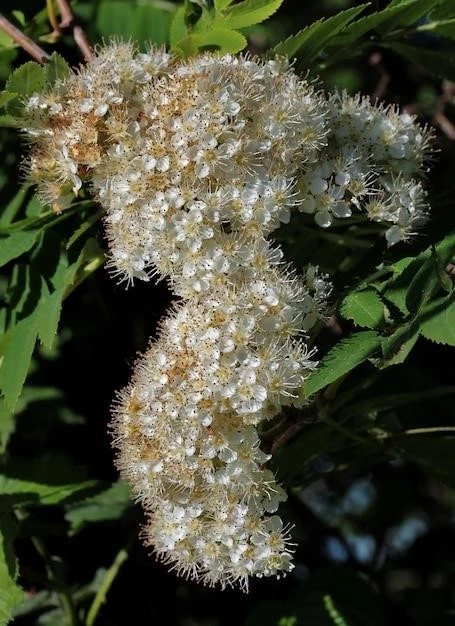Introduction to Pachyonychia congenita Jackson–Lawler type
In affected individuals of the Jackson-Lawler type, missense mutations are identified in the KRT6B gene, contributing to the condition.
The Jackson–Lawler type of Pachyonychia congenita is characterized by missense mutations in the KRT6B gene, leading to distinctive clinical presentations affecting the skin and nails.

Genetic Basis of Pachyonychia congenita Jackson–Lawler type
In individuals with Pachyonychia congenita Jackson-Lawler type, mutations in the KRT6B gene contribute to the disease.
Identification of Missense Mutations
In individuals with Pachyonychia congenita Jackson-Lawler type, missense mutations in the KRT6B gene, such as the E472K mutation, have been identified, contributing to the disease pathogenesis.
Linkage to Disease Locus and Markers
Studies have shown tight linkage of the Jackson-Lawler type Pachyonychia congenita to markers within the keratin type I cluster at 17q12-q21, elucidating the genetic basis of the disease.
Definition and Overview
The Jackson-Lawler type of Pachyonychia congenita is a distinct malformation syndrome arising from missense mutations in the KRT6B gene٫ leading to specific clinical manifestations in affected individuals.
Symptoms and Characteristics
Pachyonychia congenita Jackson-Lawler type presents with hypertrophic nail dystrophy, painful palmoplantar keratoderma, blistering, oral leukokeratosis, pilosebaceous cysts, and follicular keratoses affecting the skin and nails;
The Pachyonychia Congenita Jackson–Lawler type is an autosomal dominant disorder with a variable expression characterized by nail dystrophy, palmoplantar keratoderma, pilosebaceous cysts, and follicular keratoses.
Classification and Inheritance Patterns
Pachyonychia congenita Jackson-Lawler type is an autosomal dominant disorder with variable expression, characterized by nail dystrophy, palmoplantar keratoderma, pilosebaceous cysts, and follicular keratoses.
Clinical Examination
Clinical evaluation for Pachyonychia Congenita Jackson-Lawler type involves a detailed assessment of nail dystrophy, palmoplantar keratoderma, blistering, pilosebaceous cysts, and mucous membranes to guide accurate diagnosis and management.
Genetic Testing and Counseling
Genetic testing for Pachyonychia Congenita Jackson-Lawler type involves identifying missense mutations in the KRT6B gene٫ providing crucial information for diagnosis and appropriate genetic counseling regarding inheritance patterns and recurrence risk.

Treatment and Management of Pachyonychia congenita Jackson–Lawler type
Management of Pachyonychia Congenita Jackson-Lawler type includes emollients, oral retinoids, antibiotics, and meticulous hygiene practices.
Emollients and Topical Treatments
In the management of Pachyonychia Congenita Jackson-Lawler type, emollients and topical treatments play a crucial role in alleviating symptoms and improving the skin and nail condition.
Oral Retinoids and Antibiotics
Oral retinoids are prescribed for managing Pachyonychia Congenita Jackson-Lawler type to alleviate keratoderma symptoms. Antibiotics may be necessary to treat infections of the skin or nails.
Individuals with Pachyonychia Congenita Jackson-Lawler type have a 50% risk of passing on the disorder to their offspring with an autosomal dominant inheritance pattern. The incidence of germline mosaicism is extremely rare, affecting a small proportion of cases.
Risk Factors and Incidence
The Jackson-Lawler type of Pachyonychia Congenita has an autosomal dominant inheritance pattern, with a 50% risk of transmission to offspring. The condition has an overall rare incidence, and germline mosaicism is exceptionally uncommon in affected individuals.
Germline Mosaicism and Genetic Counseling
Pachyonychia Congenita Jackson-Lawler type is typically inherited in an autosomal dominant manner. Genetic counseling provides crucial information on the risk of transmission and recurrence for affected individuals and their families. The rare occurrence of germline mosaicism should also be considered in counseling and family planning decisions.
Research studies have identified missense mutations in the KRT6B gene in families affected by Pachyonychia Congenita Jackson-Lawler type, providing insights into the genetic basis of this condition.
Published Articles and Findings
Research studies and published articles have highlighted the identification of missense mutations in the KRT6B gene in families affected by Pachyonychia Congenita Jackson-Lawler type, contributing to a better understanding of the genetic basis of this condition.
Case studies and patient registries for Pachyonychia Congenita Jackson-Lawler type provide valuable insights into the clinical manifestations and genetic characteristics of affected individuals, contributing to a better understanding of this rare condition.
Description of Cases and Registries
Case studies and patient registries have documented the clinical features of individuals with Pachyonychia Congenita Jackson-Lawler type, providing valuable information for research, diagnosis, and treatment strategies in affected individuals;
Pachyonychia Congenita Jackson-Lawler type presents distinct clinical features such as hypertrophic nail dystrophy, palmoplantar keratoderma, pilosebaceous cysts, and mucous membrane abnormalities, setting it apart from other subtypes like Jadassohn-Lewandowsky syndrome.
Distinctions from Type I and Other Subtypes
Pachyonychia Congenita Jackson-Lawler type is characterized by unique clinical features such as hypertrophic nail dystrophy, palmoplantar keratoderma, pilosebaceous cysts, and mucous membrane abnormalities, distinguishing it from other subtypes like Jadassohn-Lewandowsky syndrome.
Keratin mutations, such as those in the KRT6B gene, contribute to the variable expressivity seen in Pachyonychia congenita Jackson-Lawler type.
Keratin Mutations and Variable Expressivity
The variable expressivity observed in Pachyonychia Congenita Jackson-Lawler type is attributed to mutations in keratin genes, particularly the KRT6B gene. These mutations contribute to the spectrum of clinical manifestations seen in affected individuals.
The historical evolution of the knowledge and classification of Pachyonychia Congenita Jackson-Lawler type has provided valuable insights into the distinct clinical features and genetic basis of this condition, allowing for improved diagnosis and management strategies.
Historical Perspectives and Updates
The historical evolution of knowledge and classification of Pachyonychia Congenita Jackson-Lawler type has provided valuable insights into the distinct clinical features and genetic basis of this condition, allowing for improved diagnosis and management strategies over time.
The Pachyonychia Congenita Project and associated research registries play a vital role in advancing knowledge and understanding of Pachyonychia Congenita Jackson-Lawler type, providing valuable resources for research, collaboration, and patient support.
Pachyonychia Congenita Project and Research Registries
The Pachyonychia Congenita Project and associated research registries play a crucial role in advancing knowledge and understanding of Pachyonychia Congenita Jackson-Lawler type, providing valuable resources for research, collaboration, and patient support.
Ongoing research in Pachyonychia Congenita Jackson-Lawler type aims to develop novel therapies and patient care strategies for improved management and quality of life for individuals affected by this rare condition.
Emerging Therapies and Patient Care Strategies
Research on Pachyonychia Congenita Jackson-Lawler type is focused on developing innovative therapies to alleviate symptoms, improve patient care, and enhance the quality of life for individuals affected by this rare condition.
The impact of Pachyonychia Congenita Jackson-Lawler type on patients and families involves physical and psychosocial challenges, emphasizing the importance of support networks, mental health resources, and advocacy efforts to improve quality of life and ensure comprehensive care.
Quality of Life, Support Networks, and Advocacy
Living with Pachyonychia Congenita Jackson-Lawler type can significantly impact the quality of life of patients and their families, leading to physical and emotional challenges. Support networks, advocacy groups, and mental health resources play a crucial role in providing assistance and improving the overall well-being of individuals with this rare condition.
Conclusion and Summary of Key Points
In conclusion, Pachyonychia Congenita Jackson-Lawler type is a rare genetic disorder characterized by nail dystrophy, palmoplantar keratoderma, and other distinctive features. Advances in research aim to develop innovative therapies and enhance patient care to improve the quality of life for those affected by this condition. Support networks, advocacy efforts, and ongoing research initiatives play a crucial role in addressing the challenges faced by patients and families, striving to provide comprehensive care and support.
